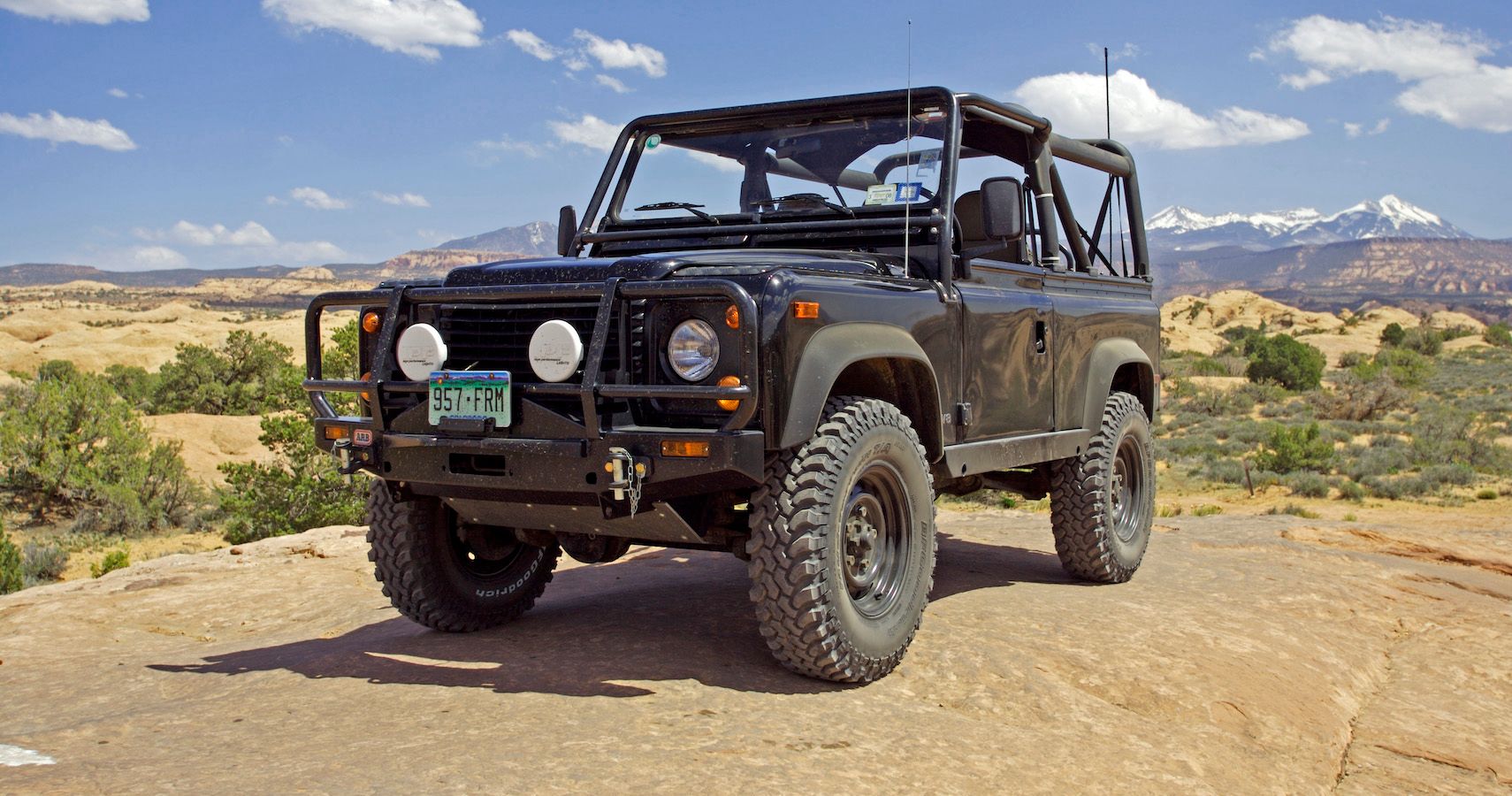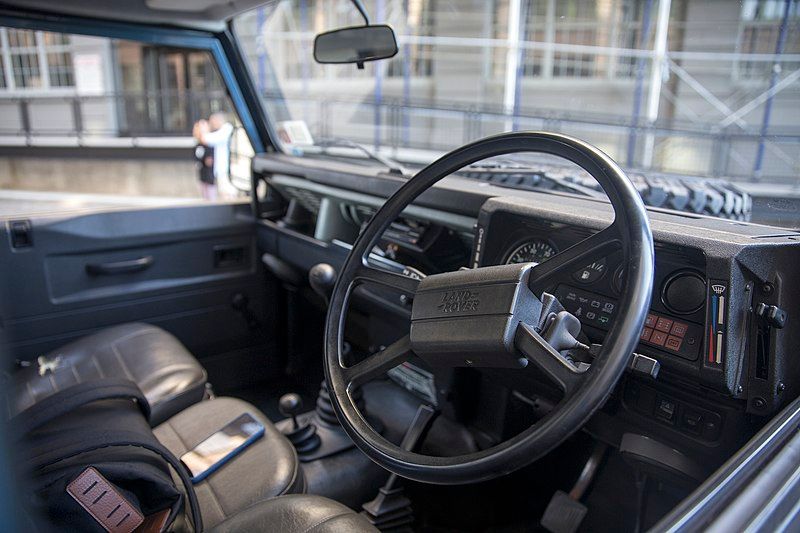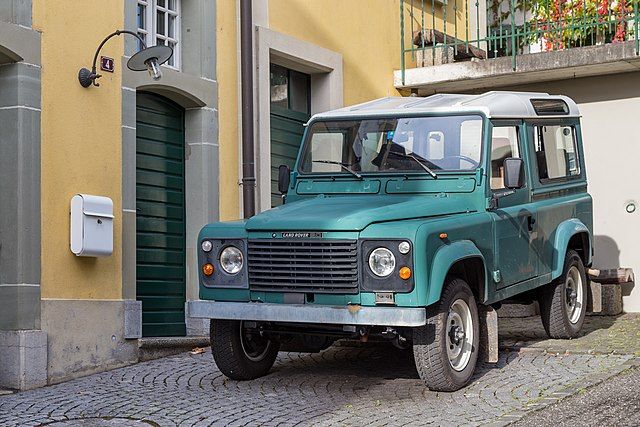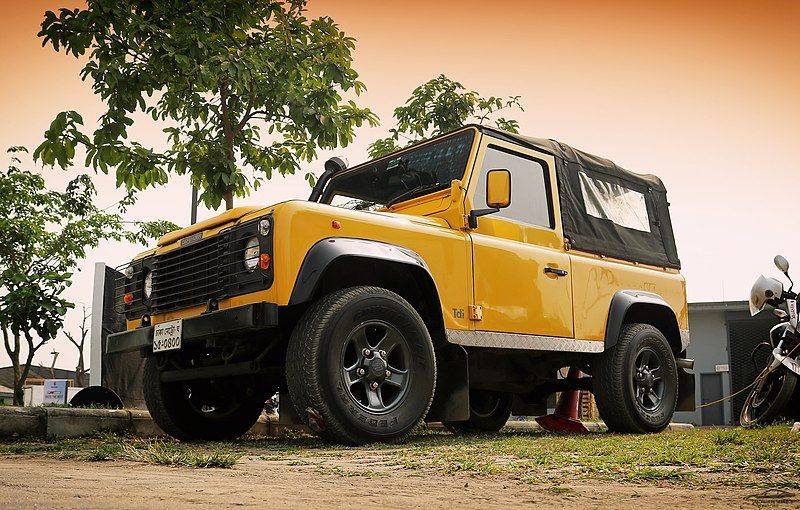The Land Rover Defender evokes imagery of adventure and dependability. With humble beginnings in 1948 as the series 1, Rover had essentially drawn inspiration from the original Jeep and modified a tractor. Built using a steel-box chassis that then had an aluminum body bolted on, the Land Rover is incredibly simple and among the list of iconic classic cars.
Although an interesting design move, Rover opted for a freewheel all-wheel-drive system where the driver didn't always have all the wheels driven. An owner could famously service their car with only two tools. As a result, it saw widespread adoption by British farmers and those who needed a utility vehicle. Looking to build on the Land Rover's success, the range expanded to include the Range Rover and then the Discovery. With the Discovery's introduction in 1989, the original Land Rover received the iconic nameplate Defender as the brand looked to distinguish between each of their models. For 1983 the Land Rover saw a move to coil springs which vastly improved ride quality, as well as the four-wheel-drive system from the contemporary Range Rover and a locking differential to further enhance its off-road capabilities.
The Defender is a rare car in North America.
Why The 1983-1997 Defender Models Are Special
The Series 1, 2 and 3 Land Rovers saw only minor revisions. In 1983 the model which would later receive the Defender name launched. This replaced the Series 3, manufactured under the newly formed Land Rover Limited, the third generation saw the continuation of different chassis lengths. With a longer wheelbase, in the form of the rare 127, the utility vehicle was more versatile than ever before. Alongside this, Land Rover Limited expanded the range of engines available to customers to include a larger 3.5-liter V8 engine.
This engine paved the way for some of the most desirable versions of the off-roader. Businesses like Twisted have created an industry around modifying these cars to be as luxurious as the upmarket Range Rover while having large V8s like the General Motors LS series. Jaguar Land Rover has even stepped into this market with the Classic Defender Works V8 70th Edition, a continuation of the iconic model with 400 horsepower and a 5.6 second 0-60 time.
With the introduction of 1983's new coil-sprung Land Rover, the company looked to make these options more public. This move gave birth to the 90 and 110 badges, denoting the length of the wheelbase in inches. Such a successful move, Jaguar Land Rover have opted to retain these models with the new L663 Defender which launched in 2020.
It Was Only Available For a Few Years
The coil-sprung Defender sold in dealerships from 1983 till 1990 as the Land Rover and then until 2016 as the Defender. However, it hasn't always been available to customers in North America. The Range Rovers were available the decade prior, and the Series 3 briefly before that. For 1993 Land Rover imported 525 modified Defender 110s, the longer wheelbase vehicle and only in a shade of white. To satisfy regulations and customers, the vehicle saw extensive modification. The most prominent of these is under the hood, which had a burly 3.9-liter V8, the largest fitted to any production Land Rover at the time, along with a five-speed manual gearbox.
In a surprising move, the 110 didn't remain on sale for the following model year. The smaller 90 replaced it and came with the same V8 power unit as the 110. Initially, the 90 could only be had in a soft-top model, which set its sights firmly on the iconic Jeep. Unfortunately, the Defender couldn't stay on sale with the new requirement for all cars to have both driver and passenger airbags. So the car left dealerships in North America in 1997 as the brand focused on their luxury vehicles, the Range Rover and Discovery. The Defender 90 and 110 would remain on sale, largely unchanged, in the United Kingdom until 2016.
A True Exotic
It's somewhat rare for a utility vehicle to exist as an exotic. There are two important requirements a car must fulfill to make it an exotic, and it is nothing to do with price. It must be rare and have a foreign element to it. These two factors generate a car's desirability. Ferrari and Lamborghini are exotic not because of their engineering brilliance, but because these marques produce relatively few cars and are imports from a foreign country. The Defender is equally rare in North America, unlike in rural Britain, where they reside in every other barn and overgrown bush. The vehicle is boxy and utilitarian by design, nowhere near as curvaceous as the vehicles leaving Maranello and Bologna. It is still a foreign product for those buyers in North America, a product of Britain's Midlands, less exotic than Italy but still different.
The result of this exoticism and the romanticization of the Defender is a relatively high price tag. This year, the car has made it onto Haggerty's Bull Market list. They write prices are in “no doubt driven by a micro-economy that places the supply well below the demand”. A cared-for yet properly used example will sell for $30,000, considerably more than a contemporary Jeep Wrangler. Classic.com, an aggregator of auction prices, found that the 1987 to 1995 YJ Jeep Wrangler on average sells for $13,400. By comparison, the 1983 to 1997 Defender is a true exotic of the utility vehicle market. Classic also finds that the Defender is slowly appreciating, like it is in other markets. However, with only a handful of examples for sale at any one time, finding one is the hardest part.




